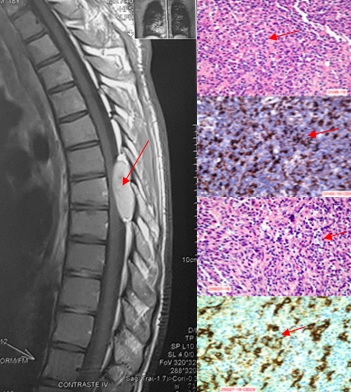Linfoma compuesto en un paciente de 18 años de edad con clínica inicial poco característico. Reporte de caso
DOI:
https://doi.org/10.18537/RFCM.39.03.06Palabras clave:
linfoma compuesto, enfermedad de Hodgkin, linfoma no Hodgkin, linfoma de células BResumen
Introducción: el linfoma compuesto es una condición rara que se compone de dos o más linfomas distintos en un mismo tejido o sitio topográfico, su causa es desconocida, su origen podría ser por selección clonal, inestabilidad genómica y/o factores implicados con el virus del Epstein Barr.
Caso clínico: se presenta un caso clínico con Linfoma Hodgkin (LH) clásico y Linfoma difuso de células B, se caracterizó de forma inicial con tos crónica, pérdida de peso, sudoración nocturna y adenopatías inguinales, que evolucionó con presencia de adenopatías pulmonares y cervicales. Los estudios histopatológicos demostraron rasgos de una entidad poco conocida resultante en la simultaneidad de dos tipos de linfomas, característico de esta patología presentada.
Conclusiones: los hallazgos clínicos y laboratoriales encontrados del linfoma compuesto son muy importantes, sirven como referente en la atención médica, con la finalidad de poder identificar este tipo de patologías a tiempo y dar un manejo adecuado.
Descargas

Descargas
Publicado
Versiones
- 30-03-2022 (2)
- 30-03-2022 (1)
Número
Sección
Licencia
Derechos de autor 2022 Andrés Fernando Andrade Fuentes, Kevin Steven Miranda Suárez , Miguel Jacob Ochoa Andrade

Esta obra está bajo una licencia internacional Creative Commons Atribución-NoComercial-CompartirIgual 4.0.
Copyright © Autors

Usted es libre de:
 |
Compartir — compartir y redistribuir el material publicado en cualquier medio o formato. |
 |
Adaptar — combinar, transformar y construir sobre el material para cualquier propósito, incluso comercialmente. |
Bajo las siguientes condiciones:
 |
Atribución — Debe otorgar el crédito correspondiente, proporcionar un enlace a la licencia e indicar si se realizaron cambios. Puede hacerlo de cualquier manera razonable, pero de ninguna manera que sugiera que el licenciador lo respalda a usted o a su uso. |
| No comercial — No puede utilizar el material con fines comerciales. | |
| Compartir Igual— si remezcla, transforma o desarrolla el material, debe distribuir sus contribuciones bajo la misma licencia que el original. |
| Sin restricciones adicionales: no puede aplicar términos legales o medidas tecnológicas que restrinjan legalmente a otros a hacer cualquier cosa que permita la licencia. |





